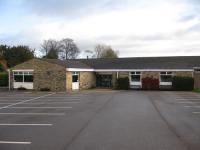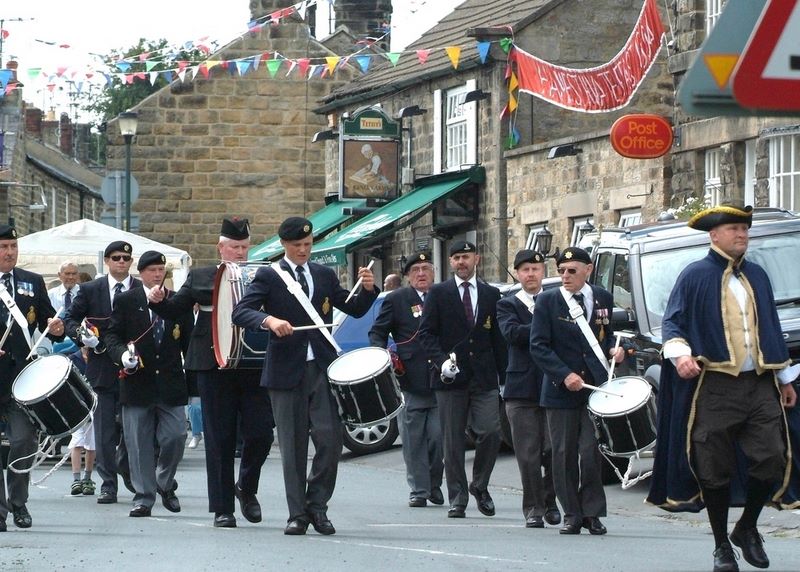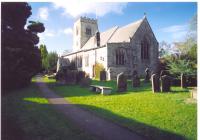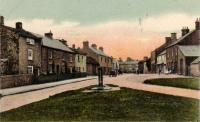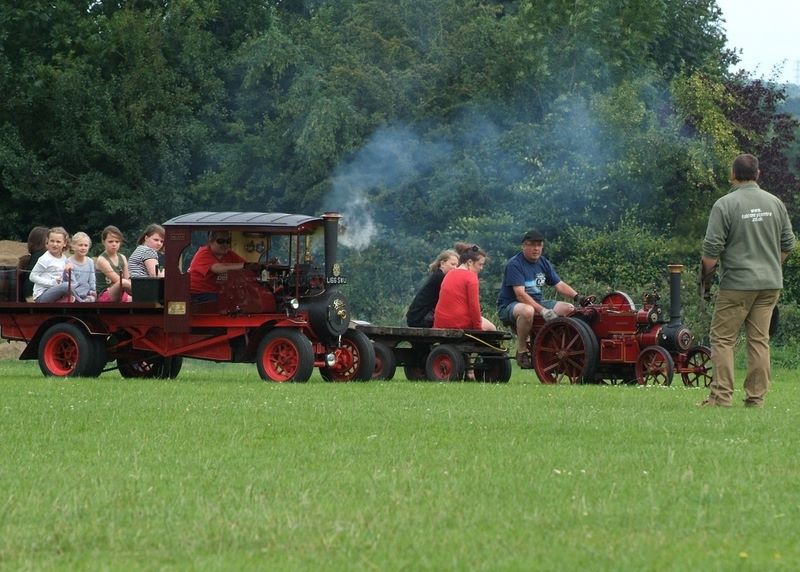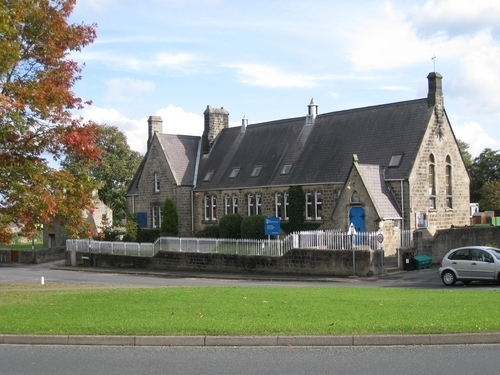Recent articles
© DT Online 2010 - 2025
| Memorial HallMEMORIAL HALL PLATINUM JUBILEE 1952 - 2022The original Memorial Hall was an ex. Canadian Camp Hut was purchased at auction and erected by local residents in 1952 to commemorate the lives and sacrifice of villagers who fell in the two World Wars. The present Hall was built in 1967 after fire destroyed the orginal hall on the 10th January 1966.The Hall was not the first such structure on the site - it had been preceded by a more fragile building the acquisition of which was described by the late Ralph Robinson in these words . . . "One day after the war,I picked up the "Yorkshire Post" and read, "Canadian Camp Huts for sale; would suit village institutes , etc". We didn't have a hall then, so I rang Sir Cecil (Aykroyd) and called a meeting. Asked where I'd put it, I suggested the Feast Field, owned by John Smith the brewers. Sir Cecil agreed to look into it and we also had an offer of free transport to the site. I asked Ernest Atkinson to go with me to the camp, which lay five miles from Hereford. On arrival we consulted the auctioneer, who could give no idea of price, but said that "builders were coming down for timber alone-it being like gold-wrapped at the time". We looked around and "saw a good one, with two ends to it just what we wanted". It had been a recreation hut and we knew that we couldn't let it go, even if it cost twice the £250, which we had agreed would be our limit. Well, the sale took place under an oak tree and the price started at £250! I just kept on waving the catalogue and at £390 I got it"! Back at Hampsthwaite I saw Charley Haxby and Alan Powers, who agreed to help to transport the hut from Leybridge. At the camp we took the tiles off first, then dismantled it in sections, marking each one. "It was a right job". A week later we set off for home. By then Sir Cecil had purchased the Feast Field (the present Memorial Hall site) from John Smith's, so the hut was dumped in the field in heaps. Eventually it was erected by the villagers." (click on images to enlarge a new window) The Hall was damaged in the severe spring gales of 1962 and it was necessary to repair the roof.
In 1963 the timber hall was brick cladded and other improvements carried out as these photos show: In 1965 the main flooring, joists and parts of the timber framing were found to be seriously affected by dry rot and wet rot. Other problems followed which was hardly surprising given the materials of which the hut was formed and which had, no doubt, been first intended for the accommodation of army personnel during the duration of the war. The following photographs illustrate the extent of dilapidations before contractors took over the premises for repair on 3rd January 1966 and before the hall was destroyed by fire during the night of 10th January 1966.
(Click on photos to enlarge a new window)
Dedication and Memorial ServiceRemembrance Sunday, November 10th, 1963 W.I. presenting the Memorial Hall clock that hung in the Main Hall to Ernest Atkinson for Golden Jubilee in 1965
The Building of a new hallOn the 10th January 1966 disaster struck when fire destroyed the hall in the space of less than one hour! During the previous week the Hall Committee had decided to make an appeal for public funds to meet the cost of dealing with an outbreak of dry rot in the timbers of the hall. It was anticipated that the cost would amount to as much as £3000 but, confident that the necessary monies would be forthcoming, work had already begun in the removing of affected timbers and new fittings purchased. The fire broke out in the late evening of Monday the 10th January and, although quickly extinguished by the Fire Brigade, continued to smoulder the following day by which time the roof had collapsed leaving only a few charred walls standing. The conflagration was reported in the local newspaper under the headline "Heart-breaking blow for village as memorial hall goes up in flames" describing how the hall had been gutted in 45 minutes. It was said that the glow of the fire had been seen down a 12-mile length of Nidderdale. The renovation works had been expected to last two months and the loss of the hall left the Hampsthwaite Players with no venue for rehearsals for the Nidderdale drama festival which was about to take place. The newly acquired replacement fittings and electrical equipment acquired for the hall stage were also destroyed in the fire. Under their chairman, Mr Ernest Atkinson, the Hall Committee announced that, despite this setback to their plans, "We will rebuild!". Within the year work was in hand to rebuild with funds raised from the insurance payments, government grants and the result of a public appeal described in this leaflet. (Click on images to enlarge in new window) The new Hall opened in November 1967 and its continued success thereafter was recorded in a newspaper article marking, in 1987, its 20th anniversary and reporting how the present purpose-built community centre had been built from £11,400 insurance monies, grant aid and subscriptions. A copy of the programme for the formal stone-laying ceremony in 1967 has survived and is shown here. Laying of the Foundation Stone and other inscribed stones on 17th June 1967
In Memoriam Panel
 The unveiling and rededication ceremony of the In Memoriam panel held on the 6th March 2014 at the Village Society's A.G.M.
To mark the 100 year anniversary of the outbreak of the Great War in 2014, Hampsthwaite Village Society commisioned work to refurbish the In Memoriam panel found inside the Memorial Hall foyer, and to add to it a biographical cameo for each of those who fell during the two world wars. The photograph shows the panel at the time of its unveiling and
Official opening of the Memorial Hall after refurbishment on Feast Saturday 2014 Feast Saturday in Hampsthwaite marked the official opening of the Memorial Hall following its extensive refurbishment works to improve energy efficiency. The project included a new roof with integrated solar panels, insulation to modern standards, LED lighting, a new zone controlled energy efficient heating system plus some improvements to its car park and general environs. The hall was also completely redecorated, now has broadband internet and boasts a fully functioning digital cinema with rear projection and dimmable cinema lighting. The improvements were made possible as a result of major grant funding from Waste Recycling Environmental (WREN) plus additional support from Awards for All, the Knabs Ridge Community Fund, plus several local businesses and individual donors. A plaque to commemorate the achievement and acknowledge all who contributed was unveiled by Mrs Jennifer Thompson and Mrs Muriel Illingworth - the daughters of Mr. Ernest Atkinson and Mr Ralph Robinson who in 1952, and then again in 1966, did so much to establish Hampsthwaite Memorial Hall as we see it today.
Amongst the sponsors listed are Sir James Aykroyd Bt., whose father Sir Cecil Aykroyd Bt. made available the land on which the hall stands, and Northern Energy Ltd, the M.D. of which is Howard Illingworth, grandson of Ralph Robinson, who initiated the idea of having a Memorial Hall in 1952. See also: http://www.hampsthwaite.org.uk/memorialhall/584 |































